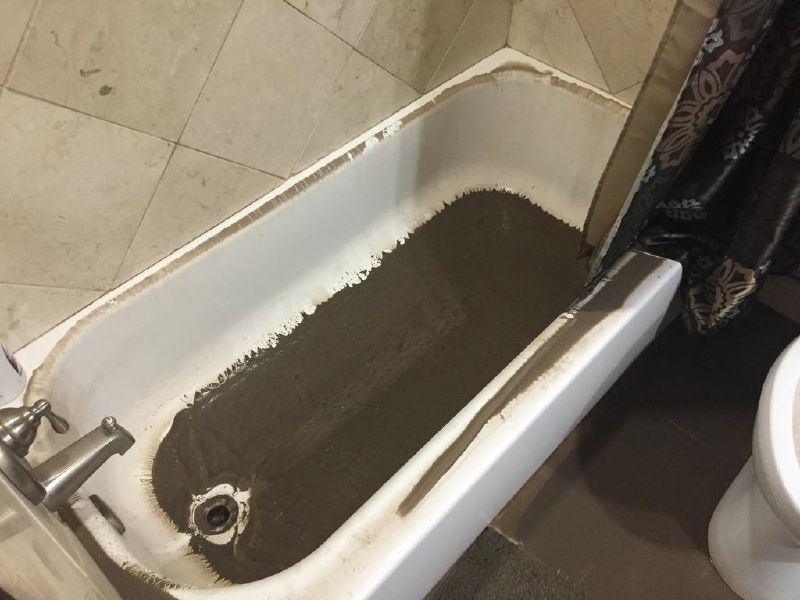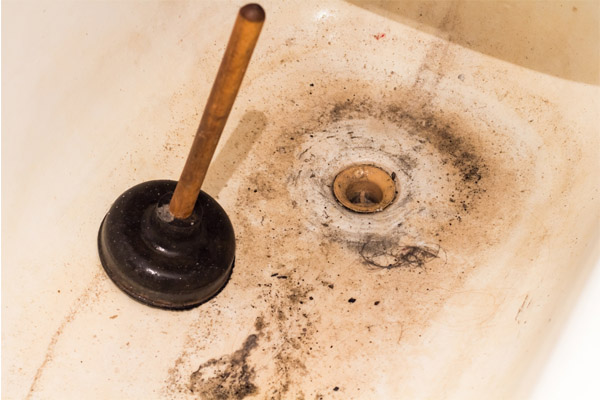Just about everyone may have their personal way of thinking when it comes to What To Do If Sewage Starts Backing Up Into the Shower.

Sewer back-up in the bathtub can be a stressful and unhygienic problem for any kind of property owner. Not only is it inconvenient, however it also postures severe health risks and suggests underlying concerns with the plumbing system. Recognizing why sewage is turning up via the bath tub is crucial for taking suitable activity to deal with the problem effectively.
Introduction to the Issue
Usual Reasons for Sewer Backup
Clogs in the Drain Line
One of one of the most typical sources of sewer back-up is an obstruction in the sewer line. This can take place due to the buildup of particles, grease, or foreign items in the pipes, stopping correct flow and triggering sewer to support into your tub.
Tree Root Intrusion
Tree roots seeking wetness and nutrients can penetrate sewer lines through small fractures or joints. Gradually, these roots can grow and expand, creating substantial damage to the pipelines and bring about sewage back-up concerns.
Understanding the Problem
When sewer draws back up into the bathtub, it's a clear indication of a problem with the water drainage system. The wastewater that needs to be moving far from your home is instead discovering its back right into your living space, which can lead to considerable damage and health hazards.
Possible Reasons
Several elements can contribute to sewage backup in the bath tub. From obstructions in the sewage system line to issues with the plumbing framework, recognizing the origin is necessary for finding a service.
Aging Facilities
Older homes may have dated plumbing systems that are much more at risk to rust, fractures, and damage. As pipelines age, they come to be a lot more vulnerable to leakages and blockages, increasing the possibility of sewage backup cases.
Heavy Rainfall or Flooding
Throughout durations of heavy rainfall or flooding, the drain system may end up being overloaded with excess water, creating backups and overflows. This can result in sewage supporting right into bathtubs and other components inside the home.
Indicators of Sewer Back-up
Foul Odors
Unpleasant odors rising from drains or fixtures, particularly in the bathroom, may indicate sewer backup issues. These smells are commonly solid and relentless, signifying a trouble that calls for prompt attention.
Slow Draining Fixtures
Bathtubs, sinks, and commodes that drain pipes gradually or not in all could be experiencing sewer backup. If numerous components are affected at the same time, it's most likely that the concern originates from a typical factor, such as the main sewer line.
Gurgling Sounds
Unusual gurgling or bubbling sounds coming from drains when water is running elsewhere in your house are a measure of air caught in the plumbing system. This air build-up can result from sewage backup and should be investigated promptly.
Health Risks Associated with Sewer Back-up
Contamination of Water
Sewer back-up can pollute the supply of water in your house, positioning a severe health risk to you and your family. Direct exposure to polluted water can cause intestinal issues, skin infections, and other ailments.
Mold Growth
Wetness from sewer backup can create ideal conditions for mold and mildew growth in your home. Mold spores can intensify respiratory system issues and create allergic reactions in sensitive individuals, making punctual cleanup essential.
Spread of Condition
Sewage has dangerous bacteria, infections, and bloodsuckers that can cause a variety of illness, consisting of liver disease, cholera, and gastroenteritis. Coming into contact with sewage or infected surfaces places you at risk of infection.
Cleaning Up After Sewer Back-up
Disinfection Procedures
Completely decontaminate and disinfect influenced locations after sewer back-up to eliminate dangerous microorganisms and prevent mold and mildew development. Usage suitable cleaning products and protective gear to make certain safe and effective clean-up.
Restoration of Impacted Areas
Repair any damages to flooring, wall surfaces, or components caused by sewer back-up. Depending on the degree of the damage, you may require to change carpets, drywall, or other materials to recover your home to its pre-loss problem.
Immediate Actions to Take
Turning Off Supply Of Water
In the event of sewage backup, it's necessary to shut off the water system to avoid additional contamination and damage. Find the primary water shutoff valve in your home and shut it off till the concern can be settled.
Getting In Touch With a Professional Plumber
Handling sewage back-up is not a do it yourself job. Contact a certified plumber with experience in handling sewage-related concerns to examine the circumstance and carry out necessary fixings or cleanups.
Staying Clear Of Contact with Polluted Water
Until the sewer backup is resolved, avoid contact with contaminated water to avoid the spread of bacteria and virus. Use protective equipment if you need to be in the damaged area and clean your hands thoroughly later.
Preventive Measures
Routine Upkeep of Drain Lines
Set up routine examinations and upkeep of your sewer lines to identify and attend to potential problems prior to they escalate right into significant issues. This can consist of clearing out debris, examining for tree root breach, and repairing any damaged pipes.
Setting Up Backwater Valves
Think about installing bayou shutoffs in your plumbing system to stop sewage from flowing back right into your home throughout periods of heavy rainfall or flooding. These valves instantly close when water draws back up, safeguarding your property from contamination.
Correct Disposal of House Waste
Prevent purging anything apart from toilet tissue and human waste down the toilet to avoid obstructions and clogs in the sewer line. Dispose of grease, oil, and other household chemicals effectively to minimize the danger of plumbing problems.
Why Is Water Backing Up in My Bathtub When I Flush My Toilet?
What to do about a sewer line clog
First, don’t bother with plunging. No amount of plunging will dislodge the clog in a sewer line. The clog is too far away. Plungers are for clogs in the toilet itself, not the sewer line. Plus, the most likely causes of a sewer clog are:
Tree roots Flushed toys or feminine products Grease buildup Those items don’t move easily. And in the case of tree roots, the roots need to be cut out of the pipe and the pipe will need to be repaired.
You’ll need a closet auger. A closet auger is a type of plumber’s snake with a protective cover to keep from scratching the delicate porcelain toilet. If the clog is further down, you may need to remove the toilet or use one of your cleanouts to get to the clog.
We also recommend doing a video inspection of the drain to ensure that the cause of the clog has been completely removed. Otherwise, you could have the same problem again in a few days or weeks.
https://mspplumbingheatingair.com/blog/why-is-water-backing-up-in-my-bathtub-when-i-flush-my-toilet

Do you appreciate reading up on What to Do if Sewage Starts Coming Up Through Your Bathtub? Create a comment further down. We would be glad to listen to your views about this blog entry. In hopes that you come back again in the future. Loved our article? Please quickly share it. Let someone else locate it. Thanks so much for taking the time to read it.
Click For More Information